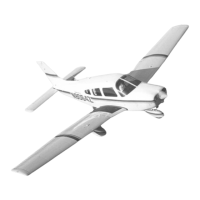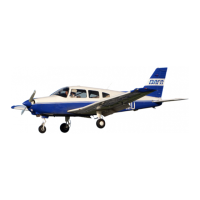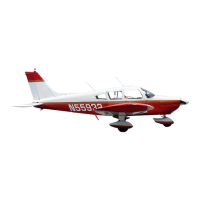PIPER AIRCRAFT, INC.
PA-28-161, WARRIOR III
MAINTENANCE MANUAL
PAGE 2
Nov 30/06 5G4
91-10-00
E. For other bolt sizes, determine the friction drag torque by attaching a scale type torque wrench to
the nut and determining the torque required to turn the nut on the bolt. (Before the nut makes
contact with the bearing surface.) Add the friction drag torque to the specified torque to get the final
torque.
NOTE: If the bolt is stationary and the nut is torqued, use the lower side of the torque range. If the
nut is stationary and the bolt is torqued use the higher side of the torque range.
F. When torquing castellated nuts, begin with minimum torque plus friction drag torque, but do not
exceed maximum torque plus friction drag torque when aligning cotter key hole with the
castellations in the nut. If they do not align change washers and retorque.
NOTE: When using castellated nuts on movable joints, do not torque as described above. Tighten
nuts only enough to remove looseness in the joint and install the cotter pin.
G. Unless otherwise specified, when parts are used on Lycoming engines, using Piper furnished or
existing Lycoming threaded fasteners, use the torque specified in Lycoming Service Table of Limits
SSP-1776 latest revision.
H. After the final torque, apply slippage mark to the nut or bolt or screw head as applicable.
NOTE: For more details on torquing, refer to FAA AC 43.13-1, latest revision.
2. Conversion Tables
The following charts contain various conversion data that may be useful when figuring capacities,
lengths, temperatures, and various weights and measures from the English system to the metric system
or back again:
Chart 3, Torque Conversion
Chart 4, Decimal Conversions
Chart 5, Temperature Conversion
Chart 6, Weights and Measures Conversion
Chart 7, Metric Conversion
Chart 8, Drill Sizes
3. Hose Specifications
See Chart 9.
4. Consumab
le Materials
See Chart 10.
5. Vendor Contact Information
See Chart 11.
6. Electrical Wire Coding
See Chart 12.
7. Electrical Symbols
See Chart 13.

